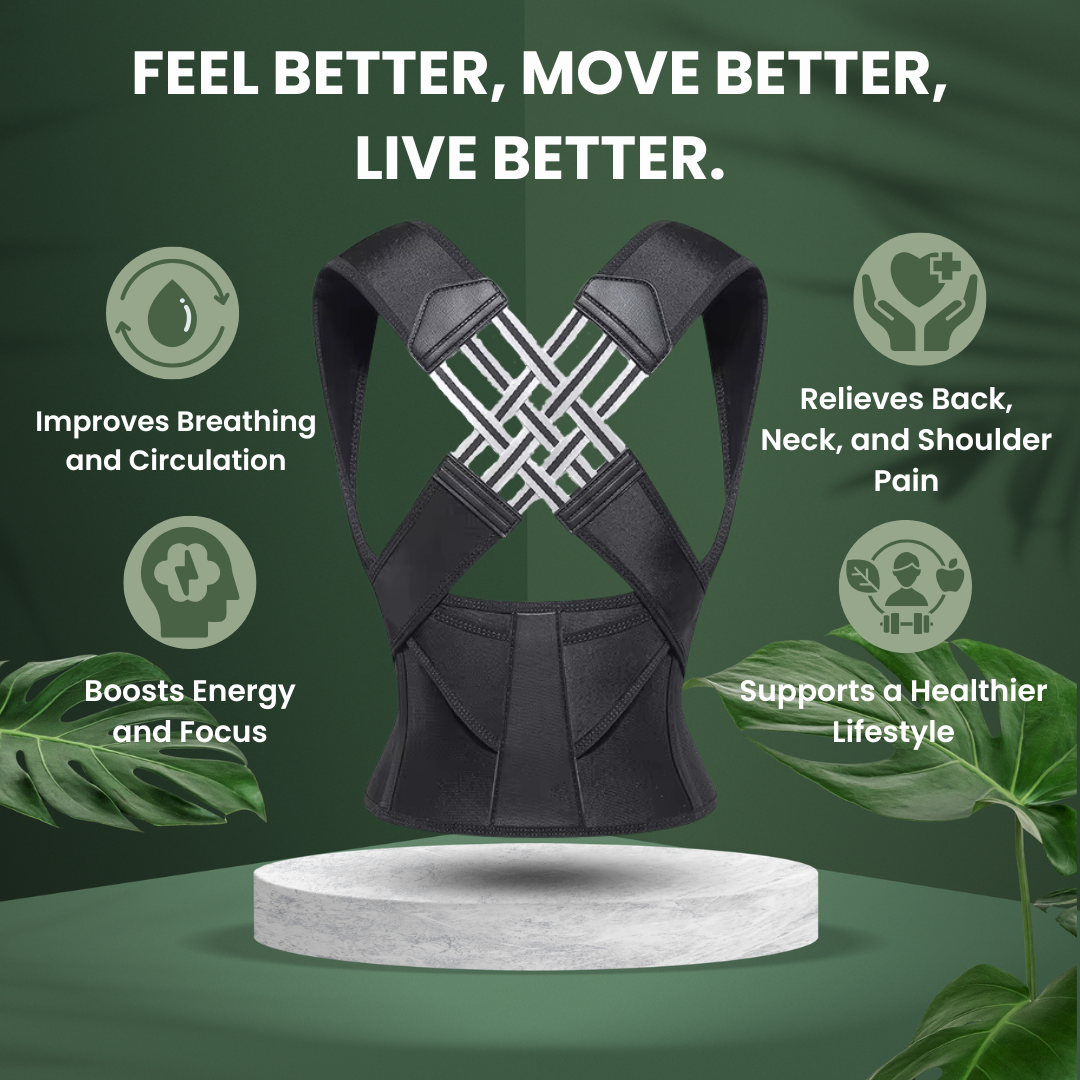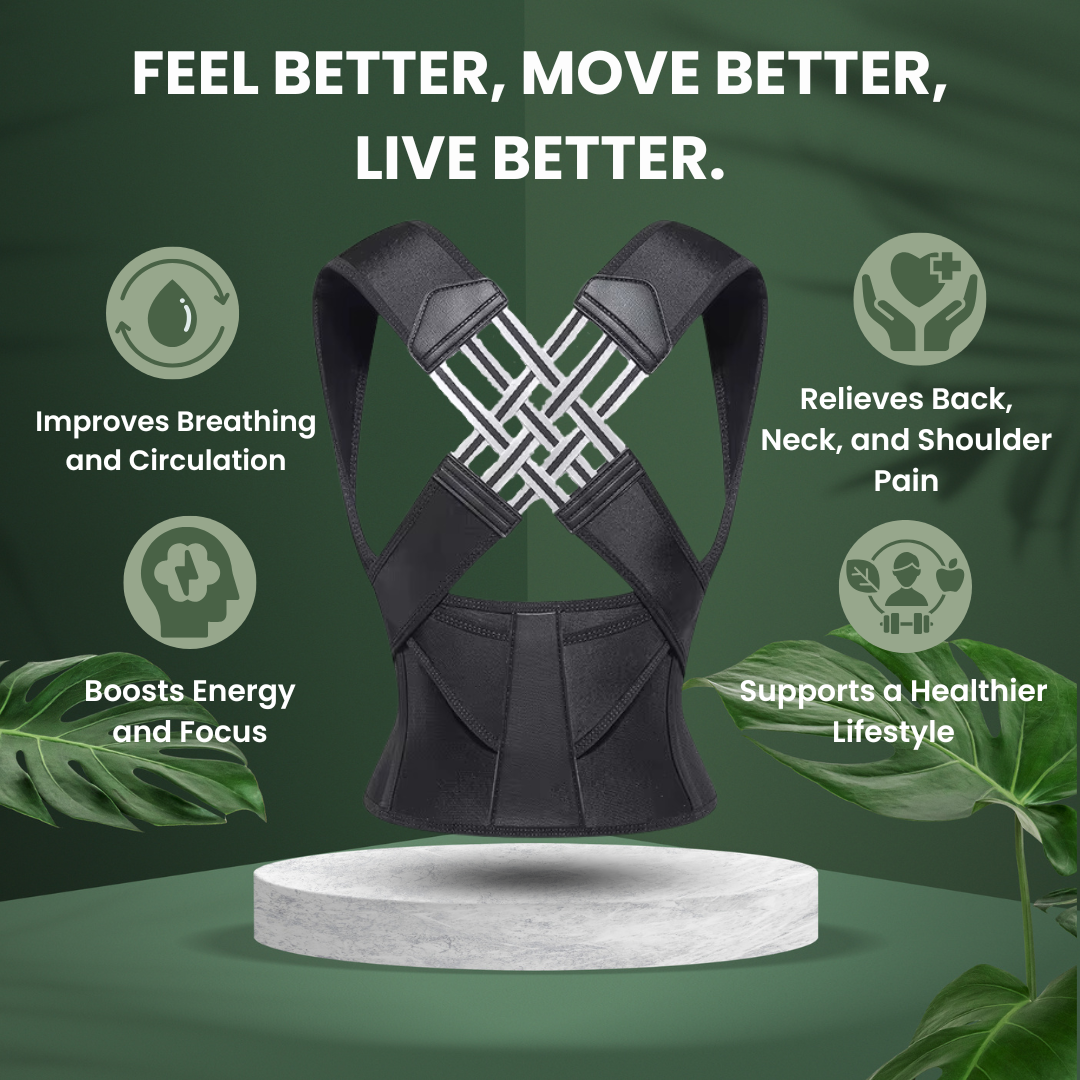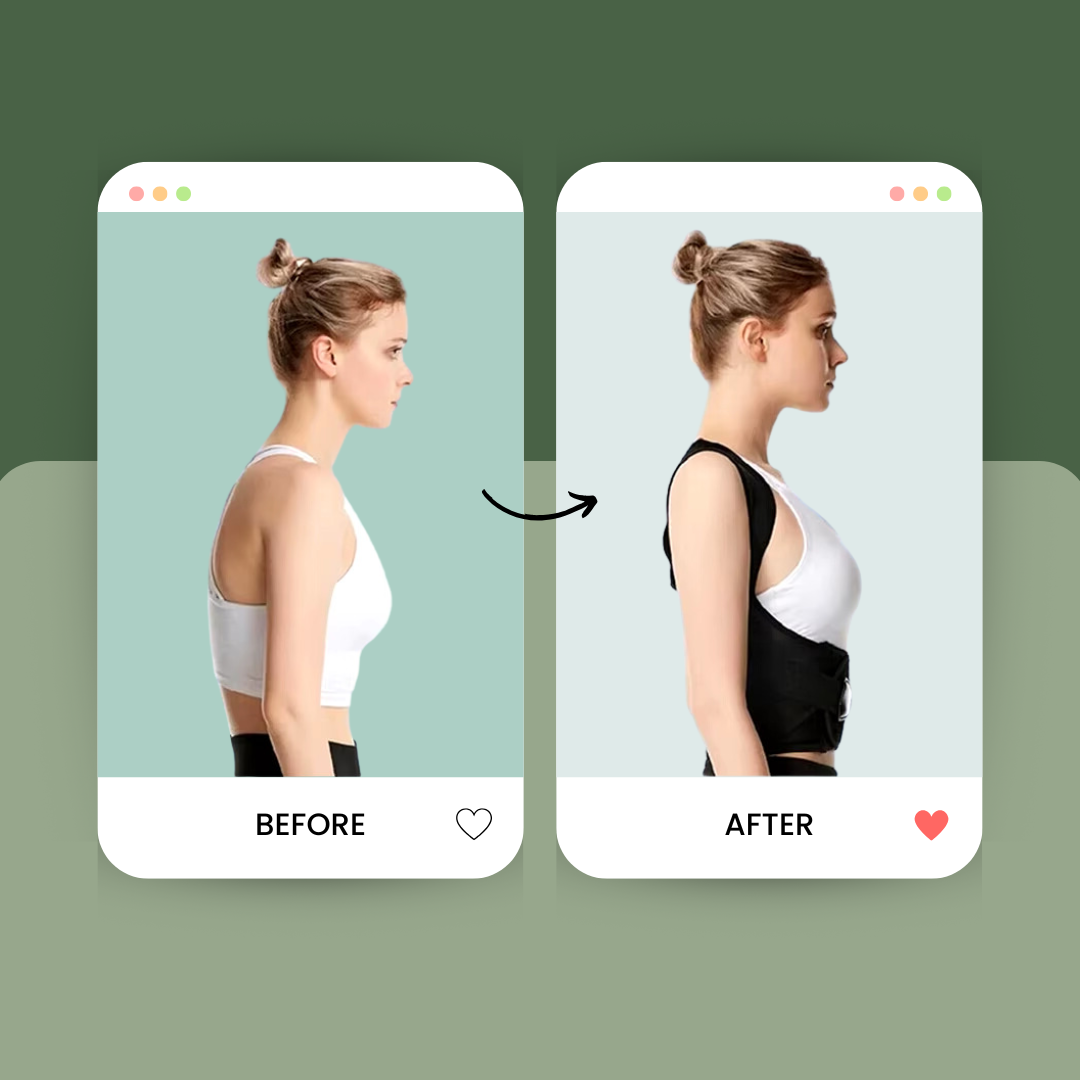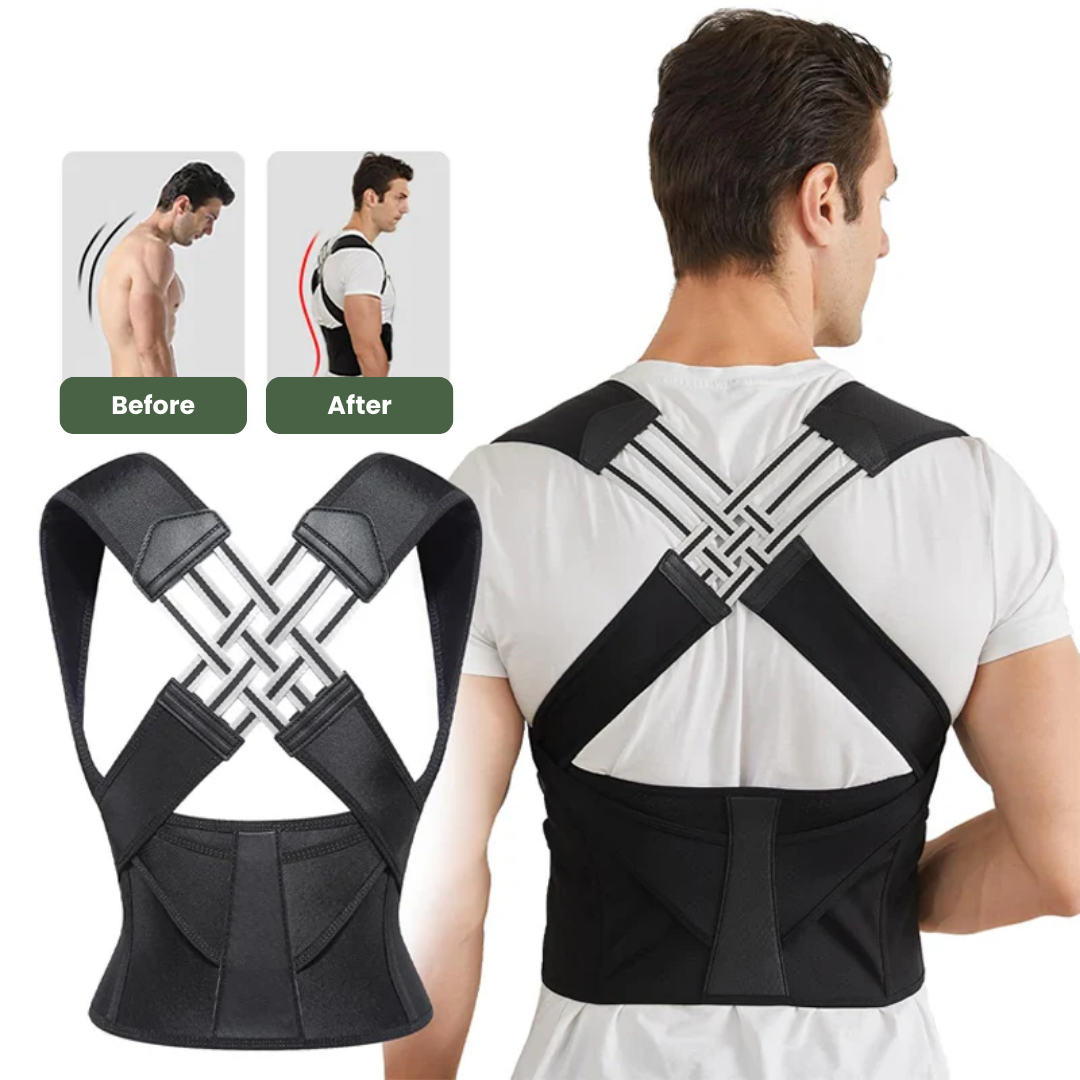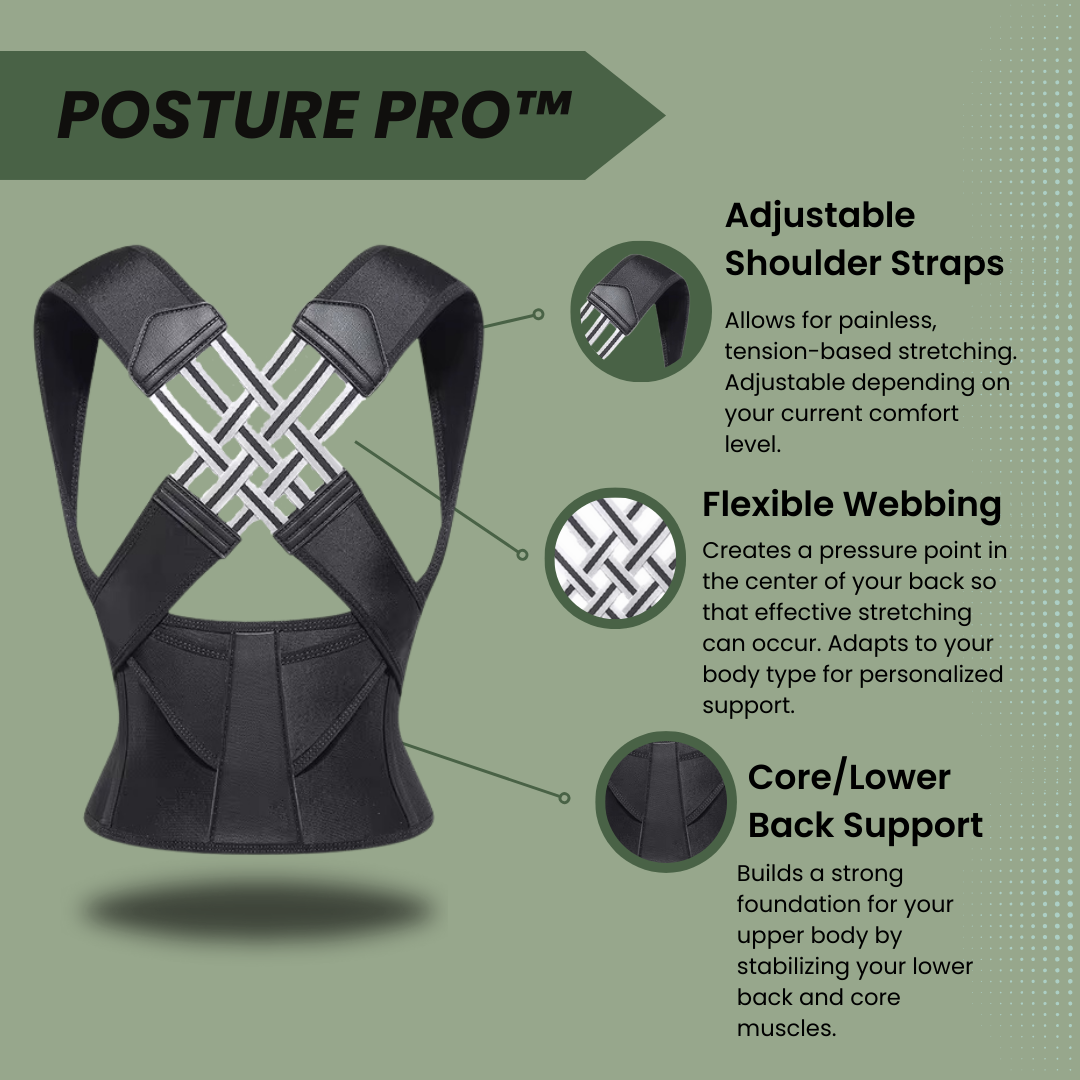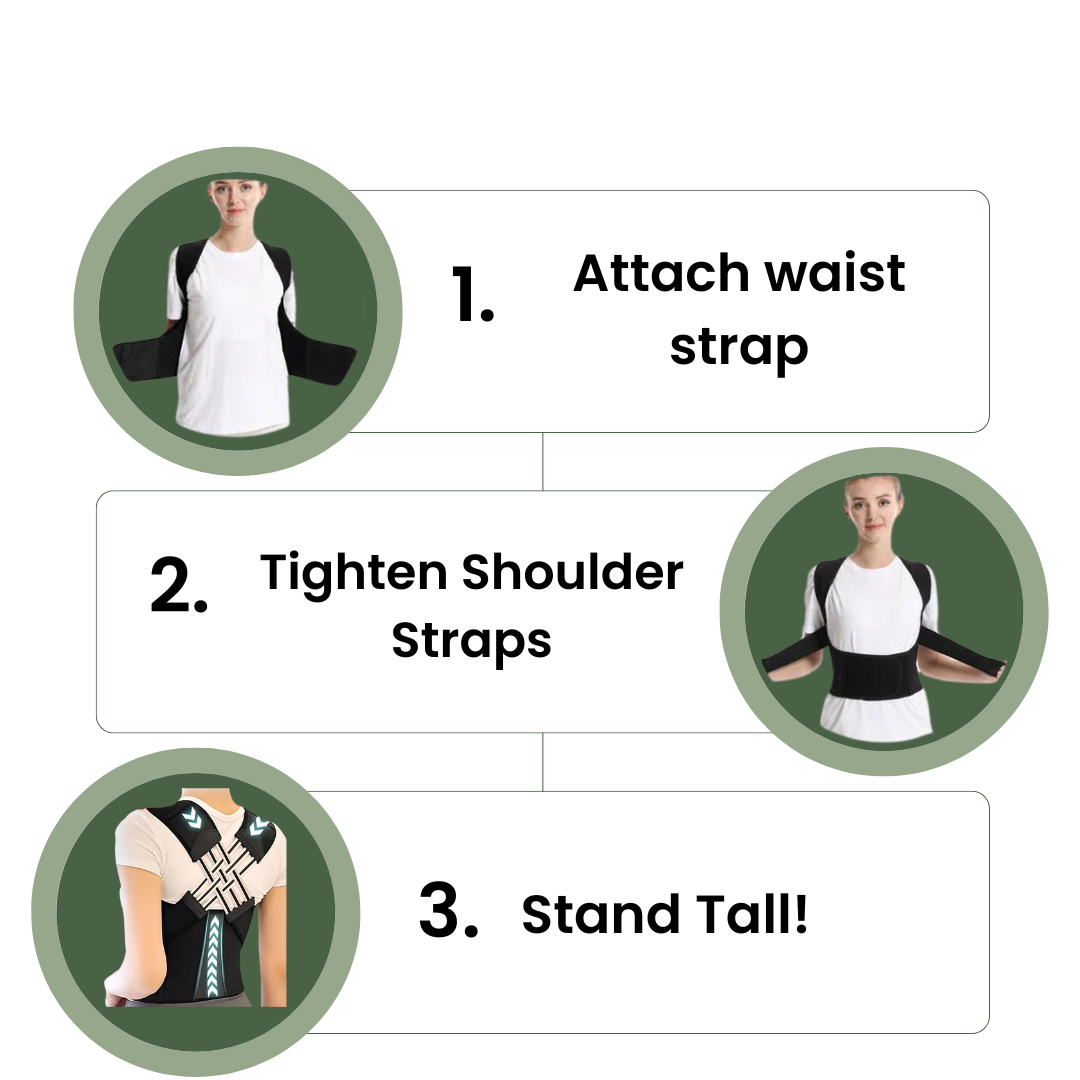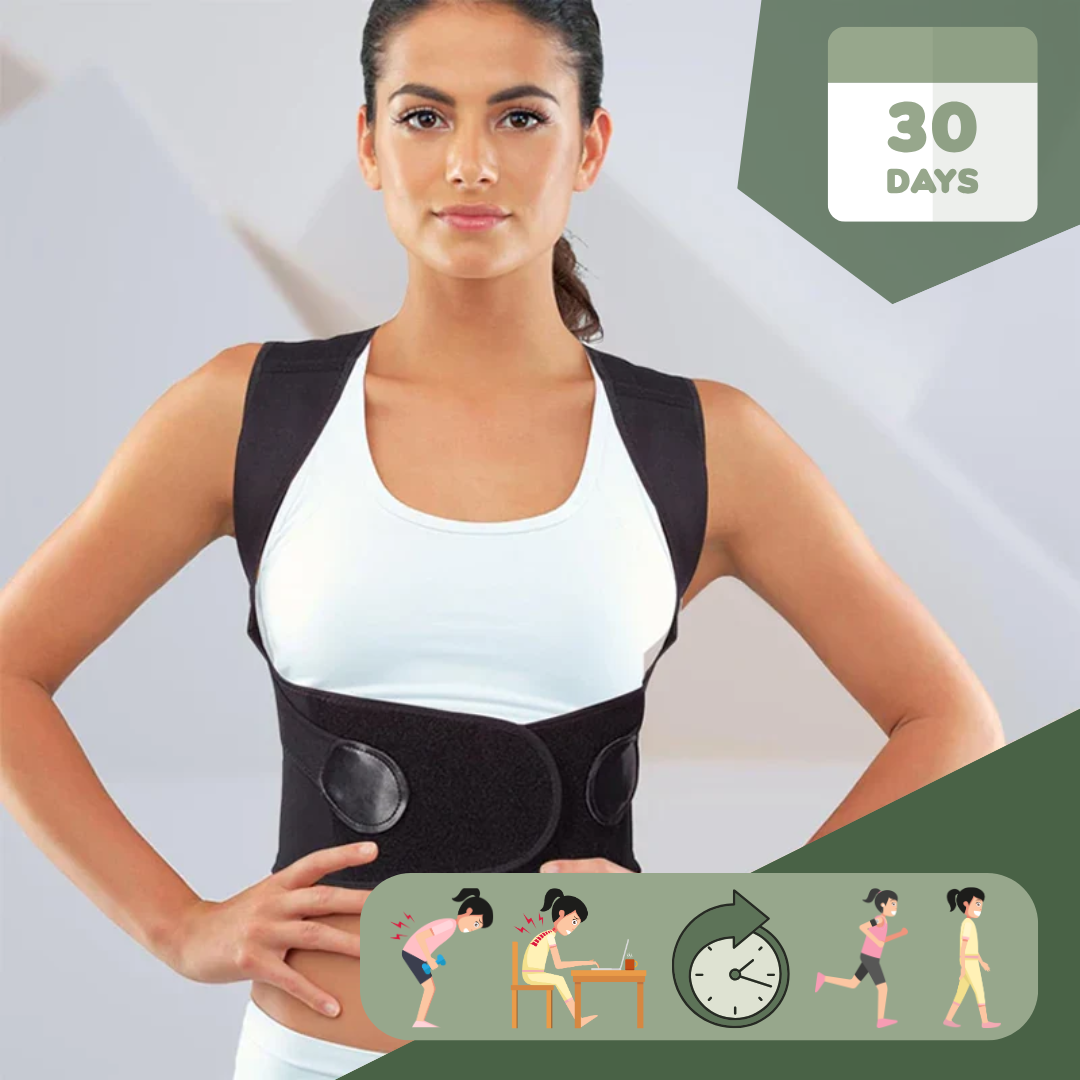Many people have trouble sitting up straight. Good posture helps your body feel better. Our article shows how moving can make your posture better. Keep reading to learn about movement for better posture.
Key Takeaways
- Moving helps keep the spine\'s natural curves right. This prevents common issues like upper and lower cross syndrome.
- Stretching and exercises, like Child\'s Pose and Cat-Cow Stretch, make muscles more flexible. This eases tension and supports the spine.
- Using posture correctors with exercises helps align the spine better. It makes core muscles stronger too.
- Making your space ergonomic and moving often stops stiffness. This improves overall health.
- Being mindful about how you sit, stand, or move improves awareness. This leads to better posture habits over time.
What is Good Posture?
Good posture is how you hold your body. It keeps the spine's three natural curves in check: at your neck, mid back, and lower back. Whether you're sitting or standing, keeping these curves aligned is key.
For sitting right, make sure your feet stay flat on the floor, don't cross your legs, and support your back well.
Good posture isn't just about looking confident; it's about taking care of your spine.
Moving right matters too. When standing still or walking around, keep those same principles in mind. Your head should be up, shoulders back but relaxed, belly in a bit to support your spine without flexing hard muscles like doing a press-up.
This balance helps prevent common problems such as upper cross syndrome from hunching over desks or lower cross syndrome from weak abdominals and tight hip flexors.
Importance of Movement for Posture
Movement plays a vital role in maintaining good posture. It enhances flexibility, reduces muscle tension, and supports proper spinal alignment. This is crucial for the health of our back muscles, shoulders, hips, and knees.
Enhancing flexibility and mobility
Flexibility and mobility keep your body moving easily. They make life better by cutting down on pain. For example, being flexible means your hamstrings are less tight, which can ease lower back pain.
This is good news since about 80% of people feel this kind of pain at some point.
Stretching and using foam rollers can improve how well you move and bend. These activities boost flexibility and help muscles relax. Plus, they're good for your heart and blood pressure too.
Stretching every day keeps you mobile, letting you enjoy activities without aches or pains.
Reducing muscle tension
Moving and stretching regularly is key to easing muscle stiffness. This makes your back muscles strong and flexible. Stronger muscles support the spine better, which cuts down on back pain.
Stretching helps in making you more flexible and lessens tension over time.
Good posture eases stress on bones and joints, cutting down muscle stiffness.
Breathing deeply also plays a big role in relaxing your muscles. Good posture improves how much air you can take in, helping your body get rid of tightness in the muscles. Exercises like yoga improve lung capacity, making breathing easier and reducing muscle strain further.
Supporting spinal alignment
Supporting spinal alignment is crucial for maintaining good posture and promoting back health. Proper alignment reduces strain on the back muscles and ligaments, leading to better musculoskeletal well-being.
You can achieve this through exercises that focus on core strength and flexibility, such as yoga postures like Child’s Pose or stretching movements like Cat-Cow Stretch. Moreover, incorporating posture correctors alongside these exercises can offer external support for a straighter spine during movement, further aiding in spinal alignment.
It's noteworthy that physiotherapists recommend specific exercises to strengthen the muscles supporting the spine and enhance pelvic bone alignment for sustainable spinal health. These interventions are crafted to improve core stability and reduce muscle imbalances that contribute to poor posture.
By combining these movements with supportive tools and techniques tailored to alleviate back discomfort, individuals can unveil the keys to better spinal alignment and overall postural wellness.
Exercises to Improve Posture
Improve your posture with these simple exercises. If you want to avoid back pain and enhance flexibility, incorporating regular movements can make a significant difference. Read more about the importance of movement for posture on our blog.
Child’s Pose
Child’s Pose is a yoga position that involves kneeling on the floor, then lowering the upper body forward with arms extended or relaxed by the sides. This posture gently stretches and lengthens the spine, glutes, and hamstrings.
It also helps to release tension in the lower back and neck. Child's Pose can be held for up to 5 minutes to allow for maximum benefit.
Throughout this pose, breathing deeply into the lower back and allowing your breath to expand your entire torso can further enhance its benefits. Incorporating Child’s Pose into your routine can contribute to better overall posture as it provides gentle stretching and relaxation for key muscle groups that play an important role in supporting good posture.
Cat-Cow Stretch
The Cat-Cow stretch is a simple yet effective yoga movement that can help improve posture. This gentle flow involves alternating between arching and rounding your back, which helps to mobilize the spine and relieve tension in the muscles surrounding it.
By doing this exercise, you can enhance flexibility in your spine and promote better alignment, diminishing strain on the back muscles over time. Including the Cat-Cow stretch in your daily routine for at least one minute can help relieve back pain while also promoting relaxation and reducing stress.
Furthermore, regularly practicing the Cat-Cow stretch may also contribute to better balance and an overall sense of well-being by promoting healthy movement patterns throughout the body.
If you have any existing medical conditions or concerns about starting a new exercise routine, it’s always best to consult with a healthcare professional such as a physical therapist or physician before beginning any new physical activity.
Standing Cat-Cow
Performing Standing Cat-Cow frequently can ease stiffness in the back muscles and enhance core strength, both vital for sustaining good posture. This exercise also activates both shoulder blades, promoting proper shoulder alignment—an important element of good posture.
Don't forget to take regular movement breaks during your day whenever feasible to integrate exercises like Standing Cat-Cow and improve postural health.
Thoracic Spine Rotation
To improve thoracic spine rotation, start by lying on your side with knees bent. Extend both arms in front of you and keep them together. Open up the top arm towards the ceiling while keeping your lower body stable.
Rotate as far as is comfortable, aiming to increase mobility. Repeat this movement 5–10 times on each side to enhance flexibility and mobility of the thoracic and lumbar spine.
You can also perform seated rotations by sitting upright in a chair with feet flat on the ground. Hold a stick or towel behind your shoulders with palms facing down and elbows pointing forward.
Slowly rotate from one side to the other, feeling the stretch in your mid-back area.
By including these movements in your routine, you can enhance spinal alignment and reduce muscle tension, fostering good posture and overall back health.
Combining Movement with Posture Correctors
To effectively improve posture, combining movement with posture correctors can be highly beneficial. Posture correctors provide additional support and alignment while performing exercises, enhancing the effectiveness of the movements.
Integrating these tools can aid in strengthening core muscles and promoting better spinal alignment, ultimately contributing to improved overall posture.
How posture correctors support alignment
Posture correctors are crafted to improve body alignment and awareness. They aid by offering support to the spine, shoulder blades, and the back muscles. By promoting proper posture, they decrease muscle tension and enhance spinal alignment.
The use of these correctors improves proprioception, which is crucial in enhancing body awareness and overall alignment.
Furthermore, posture correctors relieve musculoskeletal discomfort by addressing muscle imbalances while also augmenting core strength to maintain a healthier stance. When utilized correctly, posture correctors can prevent reliance on the device over time as users develop long-term habits for better posture.
Benefits of using posture correctors alongside exercises
Using posture correctors in conjunction with exercises offers significant benefits for improving and maintaining good posture. These tools support spinal alignment and muscle engagement while performing strengthening exercises, which in turn enhances the overall effectiveness of the workout.
Posture correctors also help in increasing body awareness, assisting individuals in recognizing and maintaining proper postural alignment during physical activities. By combining these devices with targeted exercises, people can proactively address poor posture, reduce back pain, improve core strength, and prevent future musculoskeletal issues.
Incorporating posture correctors into exercise routines not only promotes better alignment but also facilitates the development of a more ingrained habit of upright posture throughout daily activities.
As a result, this combination ultimately fosters long-term improvements in postural health and reduces the risk of associated discomfort or chronic conditions such as scoliosis or back pain.
Additional Tips for Better Posture
To improve your posture, make ergonomic adjustments in daily life. Take regular movement breaks to prevent stiffness and tension buildup. Practice mindfulness and body awareness for better posture control.
Ergonomic adjustments in daily life

Incorporating ergonomic adjustments into your daily routine can significantly improve your posture and overall physical well-being. When sitting, make sure that your chair provides proper lumbar support to maintain the natural curve of your lower back.
Adjust the height of your computer monitor so that it is at eye level to prevent straining your neck. Furthermore, using a footrest can promote better circulation and reduce pressure on the lower back.
When working at a desk, distribute body weight evenly by positioning your feet flat on the floor. Modify workspaces for better ergonomics by keeping frequently used items within easy reach to minimize strain from repetitive movements.
Also, wearing supportive shoes has a positive impact on posture as they provide stability and help align the spine properly.
By making these simple yet effective ergonomic adjustments in your daily life, you can actively contribute to improving and maintaining good posture while reducing discomfort associated with poor alignment.
Taking regular movement breaks
Regular movement breaks are essential for maintaining good posture and preventing musculoskeletal issues. When you sit or stand in one position for a long time, it puts strain on your muscles and joints.
Taking short breaks to move around can help relieve this tension and improve blood circulation which aids in maintaining spinal curvature. Research shows that including brief periods of physical activity throughout the day reduces the risk of developing back pain and other posture-related problems.
Moreover, these movement breaks can also reduce fatigue and increase productivity. Small movements like stretching, walking, or doing simple exercises at regular intervals can significantly benefit your overall health and well-being while helping to maintain good posture.
So set reminders to take quick movement breaks during prolonged periods of sitting or standing to support your posture and overall physical comfort.
Practicing mindfulness and body awareness
Practicing mindfulness involves paying attention to your body and feelings. Being aware of how you move, sit, and stand helps in recognizing habits that may be affecting your posture.
By being present in the moment, it becomes easier to notice when you're slouching or tensing up. This kind of awareness sets the stage for making necessary adjustments throughout your day.
Regular self-checks play an essential role in maintaining good posture during daily activities by preventing potential issues before they become problematic.
Mindful movement practices like yoga help enhance body awareness and flexibility. Engaging in these exercises aids in noticing the subtle shifts within your body as you move through different poses or stretches.
The emphasis on breath control and deliberate movements encourages a deeper connection with one's physical state, ultimately contributing to better posture over time.
Conclusion
In conclusion, integrating movement into your daily routine can greatly enhance your posture. Poses such as Child's Pose and Cat-Cow Stretch improve flexibility and alleviate muscle tension, promoting spinal alignment.
Introducing these movements alongside posture correctors can offer extra assistance for improved alignment and strength. Don't forget to make ergonomic adjustments in your daily life, take regular movement breaks, and practice mindfulness to achieve an overall improved posture.
FAQs
1. How does movement benefit my posture?
Movement, particularly strengthening exercises for your back muscles, core, and hip flexors can greatly improve your posture. These exercises help in spine alignment and pelvis alignment which contribute to good posture.
2. Can poor sitting posture be corrected through movement?
Yes! Posture correction is possible with the right movements targeting specific areas like your abdomen, shoulder blades, and upper arms. Physical therapists often recommend a variety of posture exercises to alleviate the effects of poor sitting posture.
3. What kind of pain can I relieve through correct movement?
By improving your posture through targeted strength training workouts such as press ups or pushups, you may experience relief from common aches and pains including back pain, neck pain, and even conditions like tennis elbow.
4. Are there any specific muscles I should focus on during my workouts for better posture?
Absolutely! Your abdominal muscles (like rectus abdominis), gluteal muscles (such as gluteus maximus), biceps in the upper arms along with tendons in thighs are key areas to target when working out for improved postural health.
5. How do I know if I'm performing these movements correctly?
A physical therapist or an orthopedics expert would be able to guide you properly regarding this aspect ensuring that each exercise is performed correctly without causing muscle weakness or injury.
6. Does breathing pattern play a role while performing these movements?
Indeed! Proper breaths while executing each roll up or stretch helps maintain rhythm and ensures effective engagement of targeted muscle groups leading to optimal benefits.



